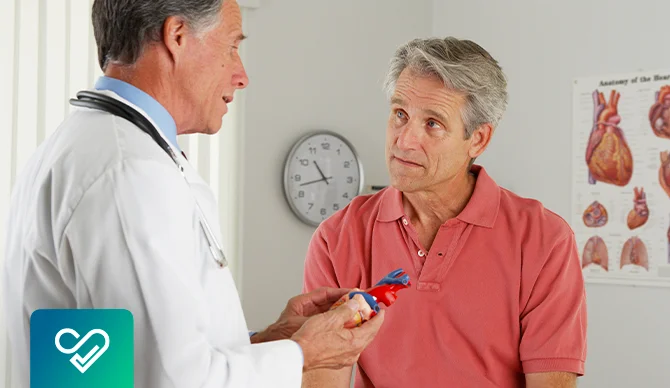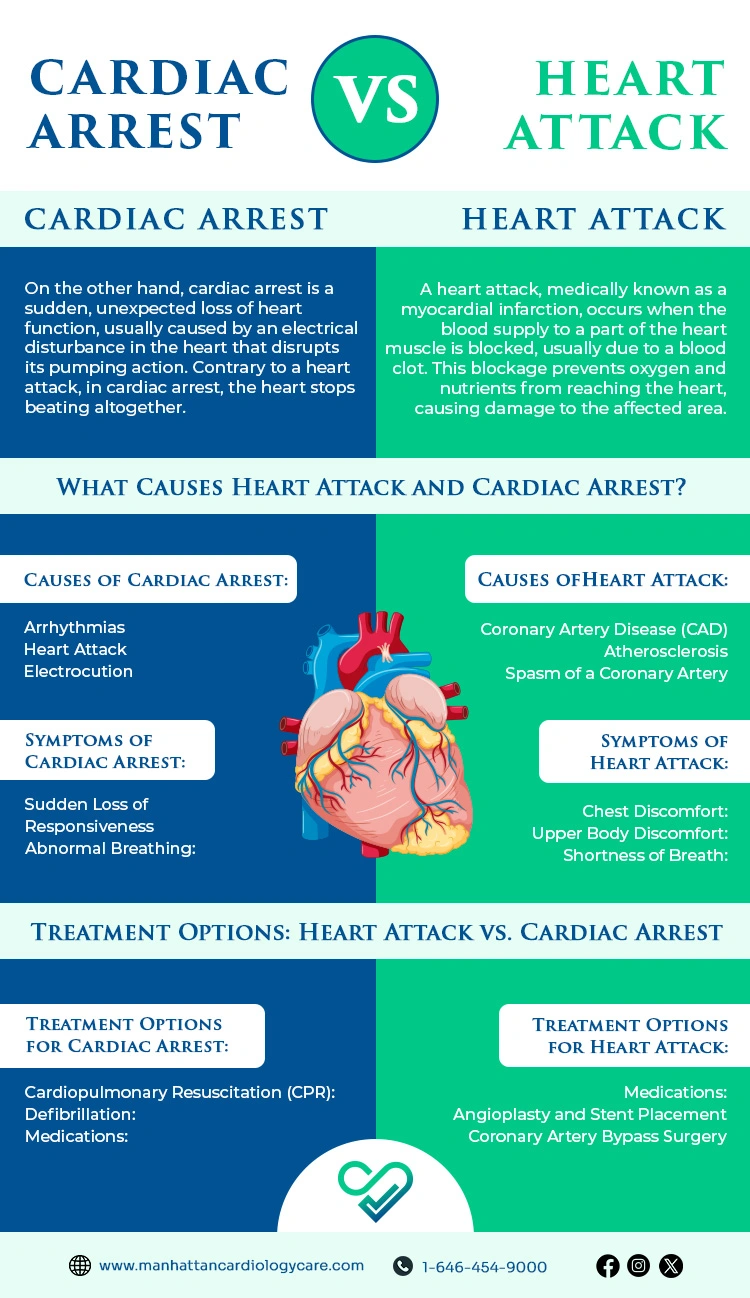Have you ever given a thought to the complicated workings of your heart? – the powerful organ that tirelessly keeps on beating within your chest.
In the world of cardiac health, two terms often become a cause for confusion: “heart attack” and “cardiac arrest.” What sets them apart, and why does it matter?
Let’s explore the mysteries of these cardiac events and gain a deeper understanding of the difference between heart attack and cardiac arrest.
Table of contents
Heart Attack vs. Cardiac Arrest: Definition
Heart Attack:
A heart attack, medically known as a myocardial infarction, occurs when the blood supply to a part of the heart muscle is blocked, usually due to a blood clot. This blockage prevents oxygen and nutrients from reaching the heart, causing damage to the affected area.
Cardiac Arrest:
On the other hand, cardiac arrest is a sudden, unexpected loss of heart function, usually caused by an electrical disturbance in the heart that disrupts its pumping action. Contrary to a heart attack, in cardiac arrest, the heart stops beating altogether.
What Causes Heart Attack and Cardiac Arrest?
Causes of Heart Attack:
- Coronary Artery Disease (CAD): Being the primary cause behind most heart attacks, CAD occurs when plaque builds up in the coronary arteries, which restricts blood flow to the heart.
- Atherosclerosis: Stiffening and thinning of arteries due to the accumulation of cholesterol and other substances, leading to reduced blood supply to the heart muscle.
- Spasm of a Coronary Artery: Sudden contraction or tightening of a coronary artery, disrupting blood flow and triggering a heart attack.
Causes of Cardiac Arrest:
- Arrhythmias: Abnormal heart beats, particularly ventricular fibrillation, can lead to a sudden cessation of the heart’s pumping action.
- Heart Attack: A heart attack can cause the heart to go into a chaotic rhythm, which can lead to a cardiac arrest.
- Electrocution: Severe electrical shocks can disrupt the heart’s electrical system, resulting in a sudden stop in its beating.
Warning Signs: Cardiac Arrest vs. Heart Attack
Identifying the warning signs of each of these conditions is crucial for timely intervention and seeking emergency medical assistance, potentially saving lives in cases of heart attack and cardiac arrest.
Symptoms of Heart Attack:
- Chest Discomfort: Described by most as a feeling of pressure, pain, or squeezing, this sensation may last for a few minutes or might also come and go for some.
- Upper Body Discomfort: Pain or discomfort in the arms, neck, jaw, or back, typically accompanying chest discomfort.
- Shortness of Breath: Experiencing breathlessness, with or without chest discomfort, is a common symptom of a heart attack.
Symptoms of Cardiac Arrest:
- Sudden Loss of Responsiveness: Unconsciousness with no response to stimuli, such as touch or sound, is a key indicator of cardiac arrest.
- Abnormal Breathing: Gasping for breath or not breathing at all. The breathing pattern is irregular and differs significantly from normal breathing.
Treatment Options: Heart Attack vs. Cardiac Arrest
In either of these cases, opting for an instant and effective treatment options is absolutely necessary. But the nature of treatment differs significantly between heart attacks and cardiac arrests.
Treatment Options for Heart Attack:
- Medications: Immediate administration of aspirin, clot-busters, or antiplatelet drugs to dissolve or prevent the formation of blood clots.
- Angioplasty and Stent Placement: A catheter-based procedure to open blocked arteries, often followed by the placement of a stent to maintain blood flow.
- Coronary Artery Bypass Surgery: In severe cases, surgery may be recommended to create new routes for blood to flow when coronary arteries are heavily blocked.
Treatment Options for Cardiac Arrest:
- Cardiopulmonary Resuscitation (CPR): Immediate chest compressions and rescue breaths to manually circulate blood and oxygen until further treatment can be administered.
- Defibrillation: The use of an automated external defibrillator (AED) or medical defibrillator to deliver an electric shock, restoring a normal heart rhythm.
- Medications: Administration of medications like epinephrine and antiarrhythmics to stabilize the heart’s rhythm and support circulation.
– Disclaimer –
This blog is for informational & educational purposes only, and does not intend to substitute any professional medical advice or consultation. For any health related concerns, please consult with your physician, or call 911.


